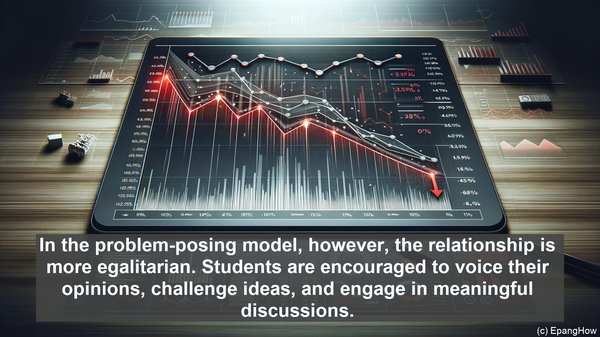Introduction: The Two Approaches to Education
Hello everyone! In the realm of education, there are two prominent approaches – the banking model and the problem-posing model. While both have their merits, they differ significantly in their fundamental principles and outcomes. Today, we’ll delve into these differences and understand how they shape the learning journey.
The Banking Model: A Passive Learning Experience
The banking model, as the name suggests, treats students as passive recipients of knowledge. It follows a one-way flow, where the teacher deposits information into the students’ minds, much like depositing money in a bank. Here, the focus is on memorization and regurgitation, with little emphasis on critical thinking or active engagement.

The Problem-Posing Model: Fostering Critical Thinking
In stark contrast, the problem-posing model encourages active participation and critical thinking. Instead of the teacher being the sole source of knowledge, this model views students as co-creators of knowledge. It presents real-world problems or challenges, prompting students to analyze, question, and seek solutions collaboratively.

Role of the Teacher: Authority vs. Facilitator
The banking model positions the teacher as the authority figure, the ‘knower’ of all. They hold the power to determine what is right or wrong, and students are expected to conform. On the other hand, the problem-posing model sees the teacher as a facilitator, guiding the learning process but also learning from the students’ perspectives and experiences.
Student-Teacher Relationship: Passive vs. Active
Under the banking model, the student-teacher relationship is often hierarchical, with limited interaction. Students are expected to listen and absorb, without much room for dialogue or debate. In the problem-posing model, however, the relationship is more egalitarian. Students are encouraged to voice their opinions, challenge ideas, and engage in meaningful discussions.
Knowledge Acquisition: Reproduction vs. Transformation
The banking model views knowledge as something to be reproduced. Students are assessed based on their ability to recall information accurately. In the problem-posing model, knowledge is seen as dynamic and ever-evolving. It is not just about reproducing facts but also about transforming and applying knowledge in different contexts.
Critical Thinking: Limited vs. Nurtured
Critical thinking, a vital skill in today’s complex world, often takes a backseat in the banking model. Since the emphasis is on memorization, students may not be encouraged to question or analyze deeply. The problem-posing model, with its focus on inquiry and problem-solving, nurtures critical thinking abilities, equipping students for real-life challenges.
